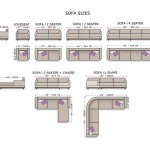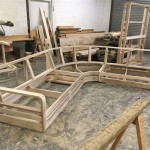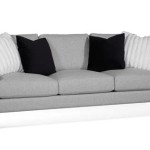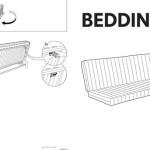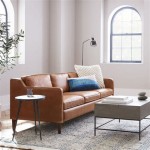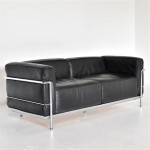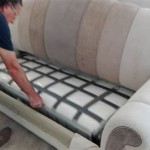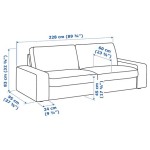Understanding Upholstery Sofa Cushion Foam: A Comprehensive Guide
Upholstery sofa cushion foam plays a critical role in the comfort, longevity, and overall aesthetic of a sofa. Selecting the appropriate foam type, density, and construction is paramount to achieving the desired seating experience and ensuring the sofa's structural integrity over time. This article delves into the various aspects of sofa cushion foam, providing a thorough understanding of its composition, characteristics, and selection criteria.
The primary function of sofa cushion foam is to provide support and cushioning. It absorbs pressure, distributes weight evenly, and contributes to the overall comfort of the seating surface. Beyond comfort, the foam also provides shape and structure to the cushions, influencing the sofa's visual appeal. The quality and type of foam used directly impacts the sofa's durability, resistance to sagging, and the length of time it maintains its shape and support.
The construction of sofa cushions typically involves encasing the foam core within a fabric covering. Often, an additional layer of batting or fiberfill is added around the foam to soften the edges and create a fuller, more luxurious appearance. The interplay between the foam core, batting, and fabric covering is what ultimately determines the feel and appearance of the cushion.
Types of Upholstery Sofa Cushion Foam
A wide variety of foam types are available for sofa cushions, each possessing distinct characteristics and suitability for different applications. Understanding these foam types is essential for making informed decisions when selecting or replacing sofa cushion foam.
Polyurethane Foam: Polyurethane foam is the most commonly used type of foam in sofa cushions due to its affordability, versatility, and availability in various densities. It is a synthetic polymer that can be manufactured with varying levels of firmness and resilience. Standard polyurethane foam is generally less expensive, but it may not be as durable as other options, particularly in high-use areas. Higher-density polyurethane foam offers greater support and longevity, making it suitable for frequently used sofas.
High-Density Polyurethane Foam: As the name suggests, high-density polyurethane foam boasts a higher density than standard polyurethane foam. This translates to greater support, resilience, and durability. High-density foam is more resistant to compression and sagging, making it an excellent choice for sofas that will be subjected to heavy use. While more expensive than standard polyurethane foam, its extended lifespan and superior performance often justify the investment.
Memory Foam: Memory foam, also known as viscoelastic foam, is a type of polyurethane foam that conforms to the shape of the body. It provides excellent pressure relief and is often used in mattresses and pillows. In sofa cushions, memory foam offers a unique seating experience, cradling the user and providing a customized level of support. However, memory foam can retain heat, which may be a concern for some individuals. It is also generally more expensive than standard polyurethane foam.
Latex Foam: Latex foam is a natural or synthetic rubber-based foam known for its resilience, breathability, and durability. Natural latex foam is derived from the sap of rubber trees and is considered a more environmentally friendly option than synthetic foam. Latex foam offers excellent support and comfort, and it is naturally resistant to mold, mildew, and dust mites. However, latex foam can be more expensive than other foam types, and some individuals may be allergic to natural latex.
Down and Feather: While not technically foam, down and feather cushions are a traditional and luxurious option. They offer unparalleled softness and comfort, conforming to the body's shape and providing a plush seating experience. However, down and feather cushions require regular fluffing to maintain their shape and loft. They also lack the firm support of foam cushions and may not be suitable for individuals who prefer a more structured seating surface. Down and feather cushions can also be significantly more expensive than foam options.
Fiberfill: Fiberfill, typically made from polyester or other synthetic materials, isn't typically used as a core cushion component, but rather as a wrap around a foam core. Fiberfill provides a softer, more inviting appearance and can enhance the overall comfort of the cushion. It helps to fill out the corners and edges of the cushion, creating a more rounded and aesthetically pleasing shape. Fiberfill is relatively inexpensive and can be added to any type of foam cushion.
Key Characteristics to Consider When Selecting Foam
Several key characteristics should be taken into account when selecting upholstery sofa cushion foam to ensure it meets specific needs and preferences. These characteristics influence the comfort, durability, and overall performance of the sofa cushions.
Density: Density refers to the weight of the foam per cubic foot. Higher-density foam is generally more durable and resistant to compression, making it a better choice for frequently used sofas. Density is a primary indicator of the foam's ability to withstand weight and maintain its shape over time. A higher density foam will deform less under pressure, providing better support and preventing sagging. Choosing the right density is crucial for achieving the desired level of comfort and longevity.
ILD (Indentation Load Deflection): ILD measures the firmness of the foam. It represents the amount of force required to compress the foam by 25%. A lower ILD indicates a softer foam, while a higher ILD indicates a firmer foam. The ideal ILD depends on personal preference and the intended use of the sofa. Individuals who prefer a softer seating surface may opt for a lower ILD, while those who prefer a firmer seating surface may choose a higher ILD.
Resilience: Resilience refers to the foam's ability to spring back to its original shape after compression. High-resilience foam recovers quickly and provides a bouncy, supportive feel. Resilience contributes to the overall comfort and longevity of the cushion. Foam with good resilience will resist sagging and maintain its shape even after repeated use. This is particularly important for sofas that are used frequently and subjected to significant weight.
Durability: Durability is a crucial factor to consider, especially for sofas that will be used frequently. The durability of the foam depends on its density, resilience, and the quality of the materials used in its construction. Higher-density foams are generally more durable and resistant to wear and tear. Selecting a durable foam will ensure that the sofa cushions maintain their shape and support for years to come.
Thickness: The thickness of the foam also plays a role in the comfort and support provided by the cushion. Thicker cushions generally offer more cushioning and can better absorb pressure. The appropriate thickness depends on the overall design of the sofa and the desired level of comfort. Too thin of a cushion may not provide adequate support, while too thick of a cushion may feel overly plush and lack structure.
Factors Influencing Foam Selection
The selection of upholstery sofa cushion foam is influenced by several factors, including the sofa's intended use, the desired level of comfort, and the budget. Understanding these factors can help guide the decision-making process and ensure that the chosen foam meets specific requirements.
Intended Use: The intended use of the sofa is a primary consideration when selecting foam. Sofas that will be used frequently, such as in a living room or family room, require more durable and supportive foam than sofas that will be used less often, such as in a guest room. High-density polyurethane foam or latex foam are excellent choices for high-use sofas due to their resilience and longevity. For less frequently used sofas, standard polyurethane foam may suffice.
Comfort Preference: Comfort preference is a subjective factor that plays a significant role in foam selection. Some individuals prefer a softer, more plush seating surface, while others prefer a firmer, more supportive surface. The ideal firmness level depends on personal preference and should be considered when selecting the ILD of the foam. It is often beneficial to test different foam types and firmness levels to determine the most comfortable option.
Budget: Budget is another important factor to consider. Foam prices vary depending on the type, density, and quality of the materials used. Higher-density foams and natural materials, such as latex, are generally more expensive than standard polyurethane foam. It is essential to balance the desired level of comfort and durability with the available budget. While it may be tempting to opt for the least expensive option, investing in higher-quality foam can often save money in the long run by extending the lifespan of the sofa cushions.
Sofa Style: The style of the sofa can also influence foam selection. Certain sofa styles, such as those with deep seating or plush cushions, may require thicker and softer foam than other styles. The foam should complement the overall design of the sofa and contribute to its aesthetic appeal. For example, a modern sofa with clean lines may benefit from a firmer, more structured foam, while a traditional sofa with a more relaxed design may benefit from a softer, more plush foam.
Allergies: For individuals with allergies, it is important to select foam that is hypoallergenic and resistant to dust mites, mold, and mildew. Latex foam is naturally resistant to these allergens, making it a good choice for allergy sufferers. Synthetic foams can also be treated with antimicrobial agents to reduce the risk of allergies. Choosing hypoallergenic foam can help to create a healthier and more comfortable living environment.
Environmental Considerations: Some individuals may prioritize environmentally friendly foam options. Natural latex foam is a sustainable and renewable resource that is considered a more environmentally friendly option than synthetic foams. Recycled foam options are also available and can help to reduce waste. Choosing environmentally conscious foam options can contribute to a more sustainable lifestyle.

4 Secrets To Finding Upholstery Foam A Erfly House

Replacement Foam Sofa Cushions Super

Custom Replacement Sofa Cushions Advanced Upholstery

Foam Replacement For Sofa Cushions Plumbs

What Type Of Upholstery Foam Is Used In Couch Cushions Centrepiece Furnishing Custom Made Sofa

Upholstery Foam Cushion Sheet 6x24x24 Medium

Down Vs Foam Sofa Cushions Circle Furniture

The Best Foam To Use For Sofa Cushions Good Better On Seat Reupholstery

4 Secrets To Finding Upholstery Foam A Erfly House

Upholstery Foam Cushion Sheet 6 X18 X72 High Density Support Premium Luxury Quality Good For Sofa Mattresses Wheelchair Table And Much More By Dream Solutions Usa Com

